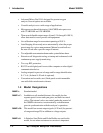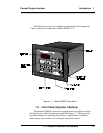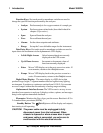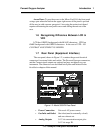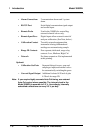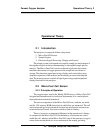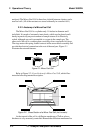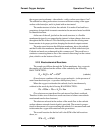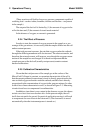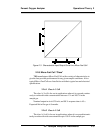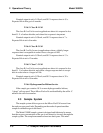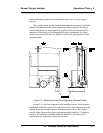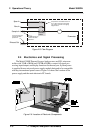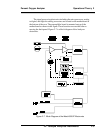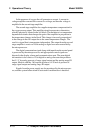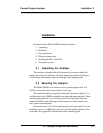
2-4
2 Operational Theory Model 3000PA
Teledyne Analytical Instruments
(These reactions will hold as long as no gaseous components capable of
oxidizing lead—such as iodine, bromine, chlorine and fluorine—are present
in the sample.)
The output of the fuel cell is limited by (1) the amount of oxygen in the
cell at the time and (2) the amount of stored anode material.
In the absence of oxygen, no current is generated.
2.2.4 The Effect of Pressure
In order to state the amount of oxygen present in the sample as a per-
centage of the gas mixture, it is necessary that the sample diffuse into the cell
under constant pressure.
If the total pressure increases, the rate that oxygen reaches the cathode
through the diffusing membrane will also increase. The electron transfer, and
therefore the external current, will increase, even though the oxygen concen-
tration of the sample has not changed. It is therefore important that the
sample pressure at the fuel cell (usually vent pressure) remain constant
between calibrations.
2.2.5 Calibration Characteristics
Given that the total pressure of the sample gas at the surface of the
Micro-Fuel Cell input is constant, a convenient characteristic of the cell is
that the current produced in an external circuit is directly proportional to the
rate at which oxygen molecules reach the cathode, and this rate is directly
proportional to the concentration of oxygen in the gaseous mixture. In other
words it has a linear characteristic curve, as shown in Figure 2-3. Measuring
circuits do not have to compensate for nonlinearities.
In addition, since there is zero output in the absence oxygen, the charac-
teristic curve has close to an absolute zero. In the percent ranges, the cell
itself does not need to be zeroed. In practical application zeroing is still used
to compensate for zero offsets in the electronics. (The electronics is zeroed
automatically when the instrument power is turned on.)



